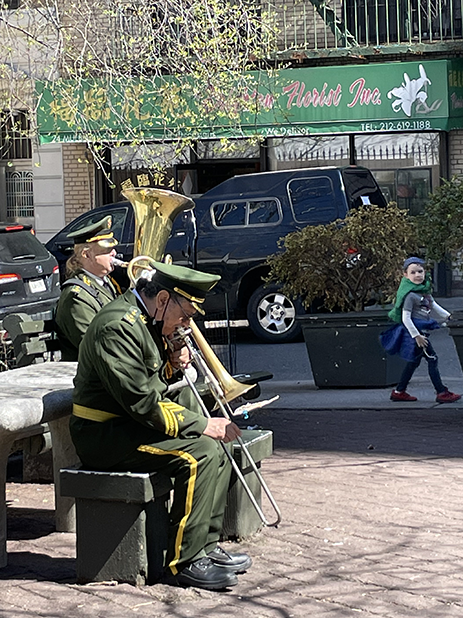Today is the day I took a tour of the “Five Boroughs minus one”. I was told by many people that there was no need to go to Staten Island because there is nothing there. Apparently, it is mostly residential. Nevertheless, since the ferry to Staten Island was just steps away – and it’s free – I thought maybe I would go just so I could say I did, but that never happened.
I signed up for a tour with the same person who took me to Hoboken, and it was truly delightful. I would recommend this tour to everyone because each borough is unique in its own way.
First Borough: We met at Midtown (Manhattan is the first borough consisting of Upper and Lower Manhattan and Midtown) and drove up 2nd Avenue to Harlem, our first stop. Harlem is in Upper Manhattan. There’s definitely a different feel here from the rest of Manhattan. Pictured below is one of the main streets; no high-rises, and it has wider streets. Harlem is known for its rich culture, including jazz music, visual art, poetry, and theatre. There are several museums, and it is affordable to live here. We were able to walk around the Apollo Theatre, established in 1913. It is iconic and is the home to African American popular music.
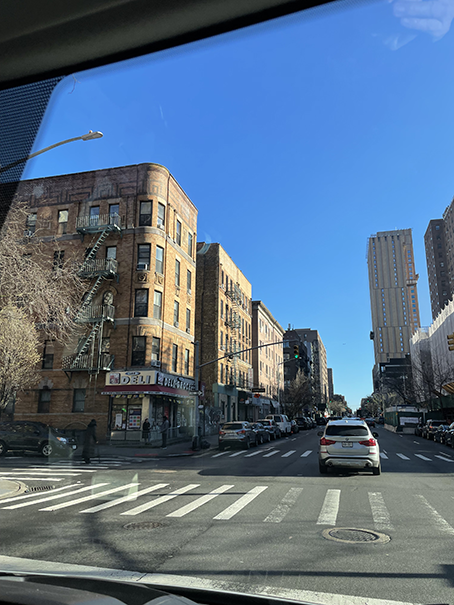
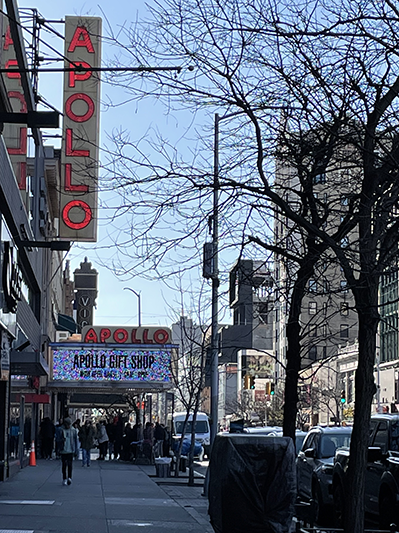
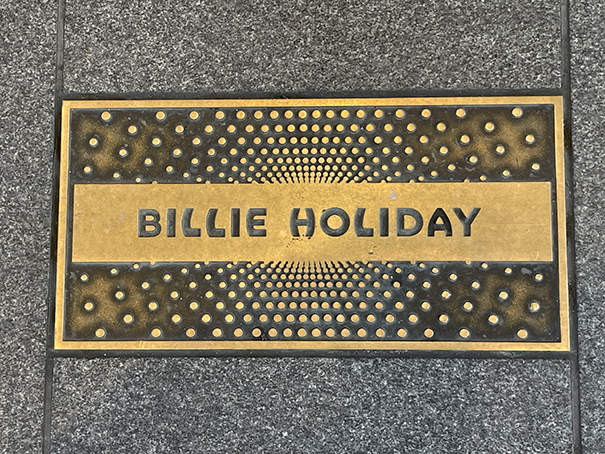
The residential neighborhoods range from Victorian to Colonial Revival to Brownstones.
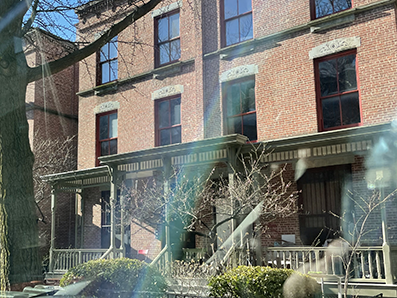
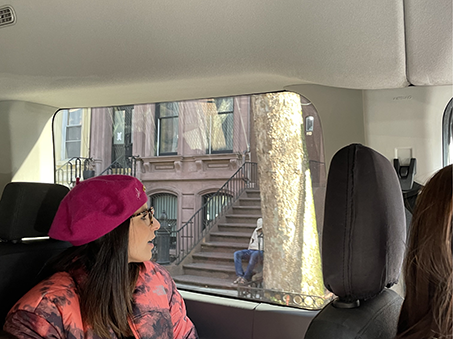
Second Borough: The Bronx, home of the “The Joker Stairs.” These stairs, made famous in the movie “The Joker” (2019), is made up of 11 flights of stairs, 12 steps in each flight, totaling 132 steps. Yes, I walked up, and I walked back down this incredibly steep staircase. I felt safe here (maybe because I was with the tour group), but I have since read that, although crime in the Bronx has dropped 70% in the past 20 years, it is still not a good idea to visit this area alone. The iconic music from the film is playing in the background, adding to the unnerving feeling of this site. These stairs were originally known as the “Shakespeare Avenue Stairs” because they are located on Shakespeare Avenue, but it’s hard to imagine people use these steps on a regular basis since they are so steep.
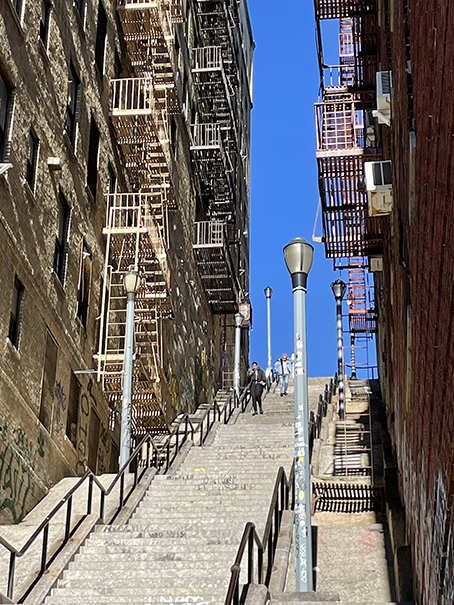
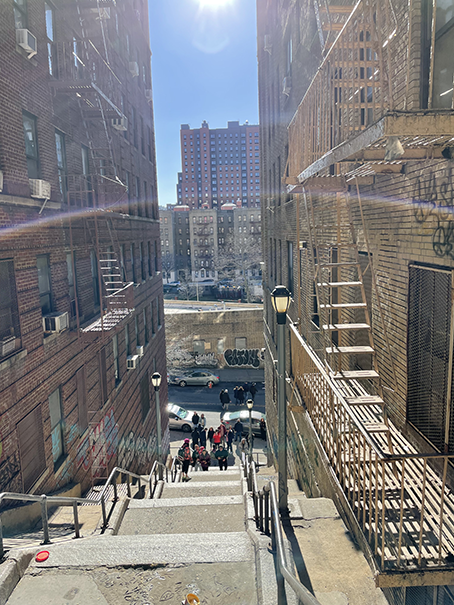
These steps are actually quite close to Yankee Stadium, which would be our next stop.
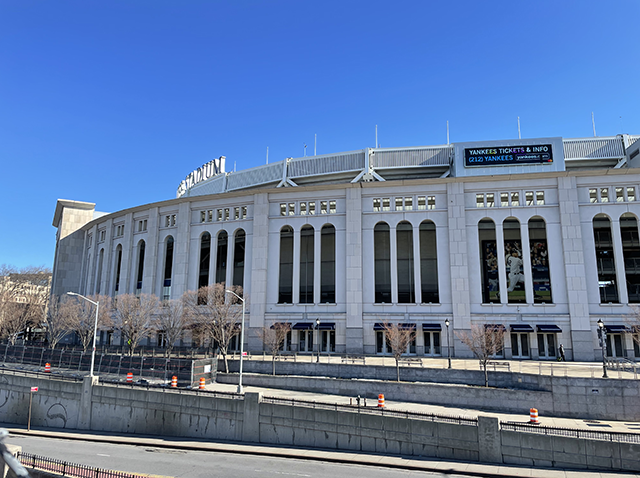
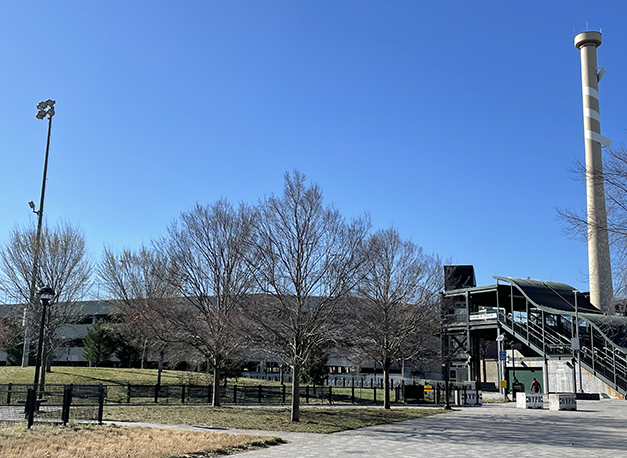
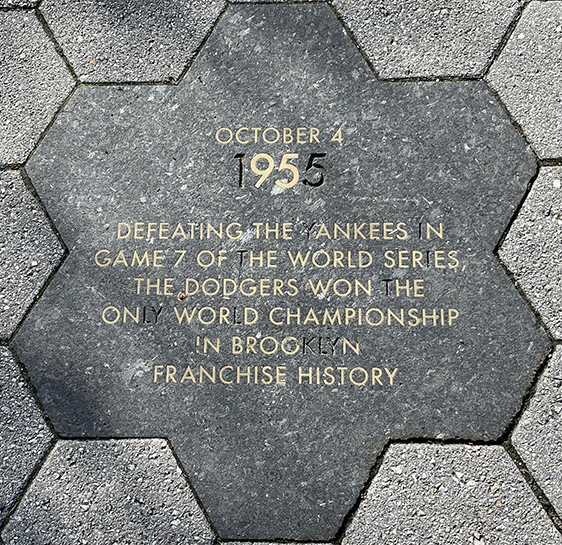
Of most interest to me about Yankee Stadium, though, was that the original stadium was located across the street from the new one. It is now named “Heritage Park” and is a public ballpark. The bat on the right side of the photo is where the entrance was to the original Yankees stadium. After just a bit of walking around, I ran across something that made my heart skip a beat.
Graffiti is considered “street art” in the Bronx, and here there are many well-known works of art.
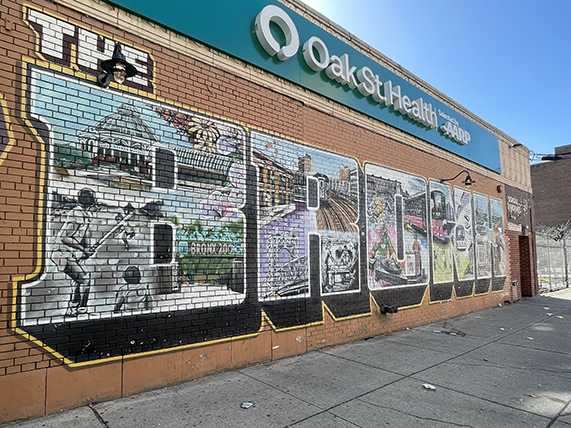
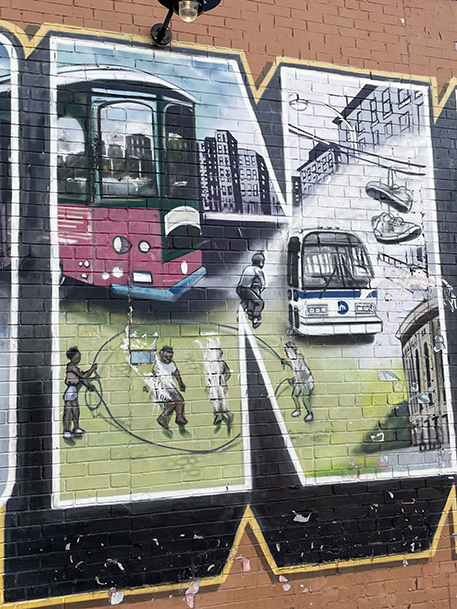
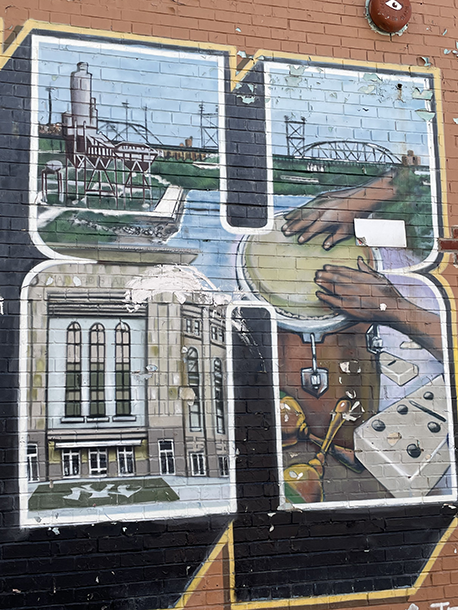
The photo above shows the work of Tats Cru, Inc., a group of Bronx-based graffiti artists turned professional muralists. The Bronx, also known for creating Hip-Hop, has many memorial murals for musicians throughout the area.
I was aware that Rudy Giuliani, the Mayor during the 9/11 attacks, was considered a hero in the way he took charge by maintaining hope throughout the tragedy and for the clean-up effort. What I was not aware of was how much he did to lessen crime in both the Bronx and Queens. As mayor of New York City from 1994 to 2001, Giuliani understood that public order was necessary. Working with the then police commissioner, he identified where the crimes were occurring and held local police chiefs accountable. He added staff to the police force and rewarded those who turned in cop killers. The crime rate decreased by 56% during his tenure. To this day, these two areas are safer than they ever had been.
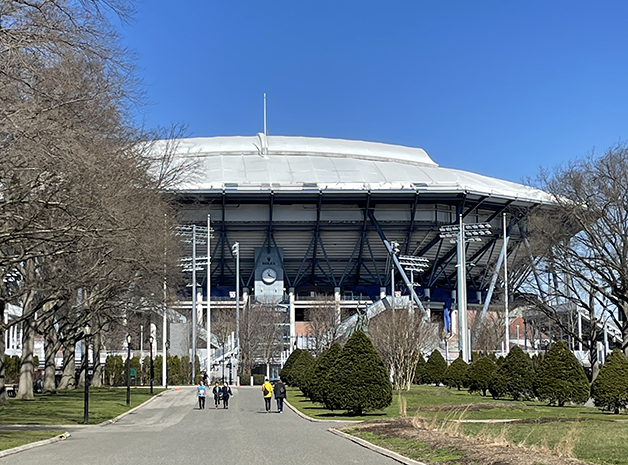
Third Borough: Queens is the most culturally diverse. We crossed a bridge to get there . Unfortunately, I don’t recall the name of the bridge; there are over 2,000 bridges and tunnels in New York City several of which connect the Bronx to Queens. Our first and only stop was Flushing Meadow-Corona Park in Queens. Flushing Meadow is where the US Open is played and the stadium is called “Billie Jean King National Tennis Center.”
Adjacent to the tennis stadium is Corona Park, which was the site of the World’s Fair in 1964. The fair’s theme was “Peace Through Understanding” and was dedicated to man’s achievement in a shining universe. The symbol for this was a stainless-steel model of the Earth called the “Unisphere.”
We had a little time to walk around this 897-acre park, but once I spotted the food truck selling hot dogs, my walking was done.
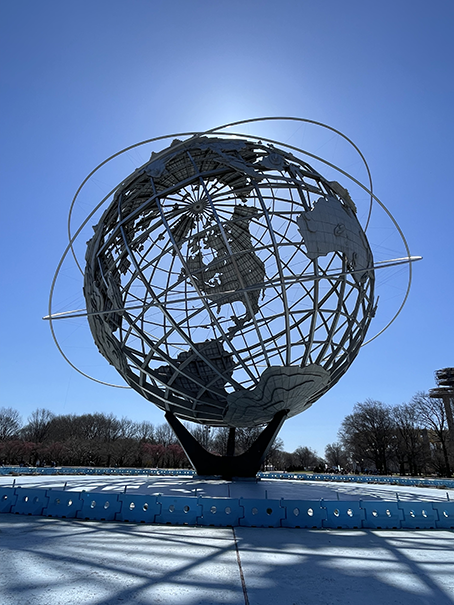
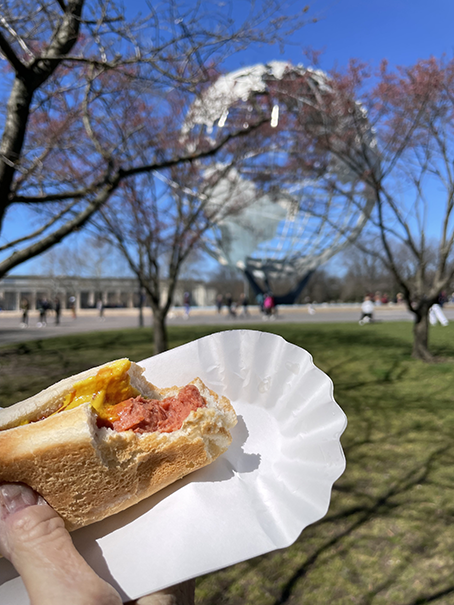
Fourth Borough: Brooklyn is known as the trendiest of all boroughs, with many activities. Our first stop was Williamsburg, the northern part of Brooklyn, where the young and the fashionable are drawn to boutiques, modern restaurants, and cafes. The waterfront has stunning views of the Manhattan skyline, which is a great invitation as well.
We were then taken to the Hasidic neighborhood of Williamsburg. Here men must not cut or trim their hair within a special facial region which means their sideburns grow indefinitely. Hence, long side curls that curl downward. Men are in black; women wear scarves or wigs over their head. There are signs in Yiddish and Hebrew in the storefronts. While some carry cell phones, all are older flip phones. Hasidic people, traditionally, shouldn’t have anything modern, or in color. In an effort to preserve their customs, this religion attempts to shut out much of the outside world. They are not supposed to indulge in any electronic devices. They are not supposed to drive; men take the bus to go to work if their job is not within walking distance.
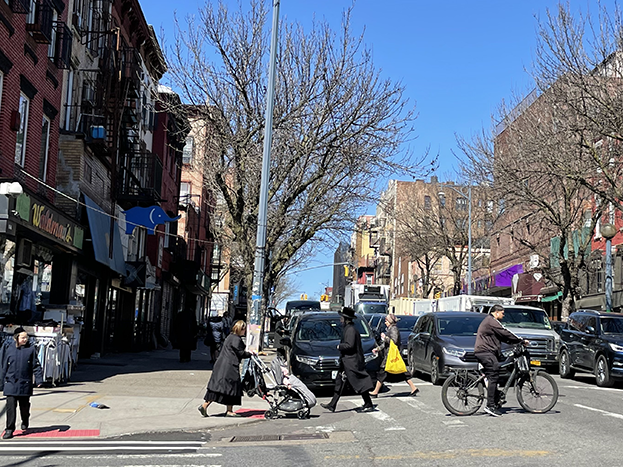
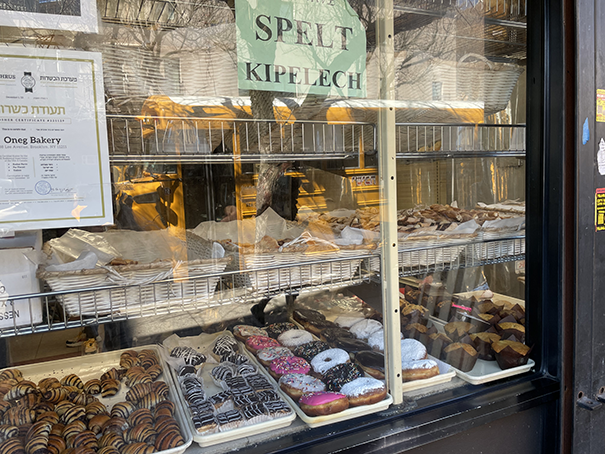
It was quite an experience to see how these people live in 2023. And, given my sheltered, small life in Chino, it was quite surprising; I just had no idea.
Fifth Borough: Again, we only went through four boroughs; Manhattan was where we started. Our tour guide mentioned that we would not go to Staten Island, the Fifth Borough. She asked everyone if they knew why. The reason: “Because there is NOTHING there!” She got a good laugh, but in reality, as I mentioned before, this is true.
We crossed the Brooklyn Bridge to get back to Manhattan. This area of Brooklyn is referred to as DUMBO; the area where Cecconi’s is located between the Manhattan Bridge and the Brooklyn Bridge. I have often wondered what DUMBO referred to. My first thought was Disney’s elephant but then I thought it referred to a specific ethnicity. Are you ready? Down Under Manhattan Bridge Overpass. DUMBO.
I was dropped off in Lower Manhattan (we started the tour in Midtown) and began my trek home by foot. I treated myself to a late lunch at Wolfgang Pucks near the St. Peters Church, one of my first stops when I first moved here last September. Doing exactly what I would never do at home, I sat at the bar and ordered a glass of pinot noir and a light lunch. So very New York! It was the end of a wonderful, interesting, and enlightening Sunday!
When I saw these two men I realized I must have missed a parade today, but then again, I am marching to the beat of my own drum. I am in my own personal parade all the time.
